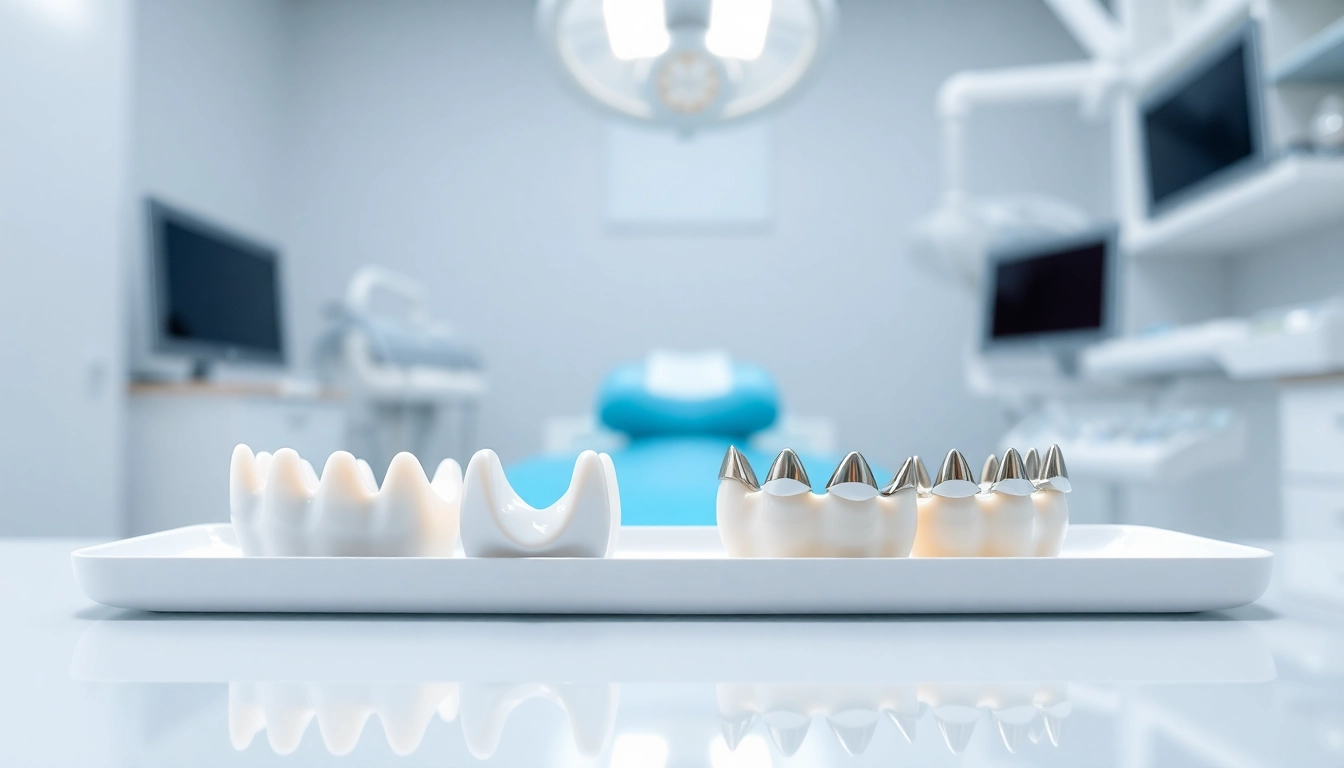What Are Dental Crowns?
Definition and Purpose
A dental crown is essentially a tooth-shaped “cap” that is placed over an existing tooth to restore its shape, size, strength, and enhance its appearance. Crowns can be essential in protecting weakened teeth, restoring broken ones, or covering teeth that have undergone extensive treatment such as root canals. They serve a critical role in dental restoration and hygiene, allowing individuals to maintain not only a functional bite but also a confident smile. Crowns can also be utilized in conjunction with dental implants to reconstruct a missing tooth, ensuring the integrity of one’s dental structure.
How Dental Crowns Work
The function of a dental crown is primarily structural. By encasing the entirety of a compromised tooth, a crown reinforces it against further damage. This is particularly crucial for teeth that have undergone significant decay or trauma. Crowns can also serve cosmetic purposes, improving the aesthetic appeal of a tooth that might be discolored or irregular in shape.
Furthermore, crowns work harmoniously with your natural bite. Once in place, they help to distribute chewing forces evenly, preventing undue stress on adjacent teeth. This aspect is pivotal in dental medicine, as uneven pressure can lead to subsequent issues, such as tooth fractures or even periodontal disease.
Who Needs a Crown?
Crowns are typically indicated in various situations including, but not limited to:
- Restoration after a root canal treatment.
- Protection of a weak tooth from breaking.
- Restoration of a broken tooth.
- Covering dental implants for replacing missing teeth.
- Holding a dental bridge in place.
- Improving the shape or color of discolored teeth.
If you’re experiencing any issues resembling these conditions, consulting your dentist for an evaluation is advisable.
Types of Crowns Available
Porcelain Crowns
Porcelain crowns are renowned for their aesthetic appeal, as they can closely mimic the appearance of natural teeth. These crowns are particularly valuable for restoring front teeth, where appearance is paramount. They are durable but may not be the best choice for back teeth that endure more significant biting and chewing forces. A notable advantage is their ability to resist stains, maintaining an appealing look over time.
Metal Crowns
Metal crowns, often made from gold or other alloys, are known for their strength and durability. They withstand significant bite pressure and are less likely to fracture compared to their porcelain counterparts. However, their metallic color can be a downside for those seeking a more natural appearance. Thus, they are commonly used in posterior teeth, where they are less visible.
Porcelain-Fused-to-Metal Crowns
Porcelain-fused-to-metal (PFM) crowns combine the best of both worlds—strength from the metal base and the natural aesthetic of porcelain. This type of crown is versatile and can be used in various situations, offering both durability and appearance. However, one point to consider is that over time, the porcelain exterior may become prone to wear and tear, revealing the metal beneath.
The Dental Crown Procedure
Initial Consultation and Assessment
The journey to getting a dental crown generally begins with a thorough consultation where your dentist will evaluate your oral health and determine if a crown is suitable for your situation. Initial X-rays may be taken to assess the health of the tooth and surrounding structures. The dentist will discuss your options, including the type of crown most suitable for you.
Preparation and Impressions
Once it has been determined that a crown is necessary, the next step is preparation. This involves reshaping the existing tooth so that the crown can fit properly. In cases where the tooth is significantly damaged, additional modified materials may be added to ensure a secure fit. After the tooth is prepared, impressions will be taken. These can be done using traditional putty-like materials or more modern digital scanners, providing a 3D representation of your tooth.
Placement of the Crown
In most cases, patients will receive a temporary crown for protection while the permanent crown is being crafted in a dental lab, which usually takes about two weeks. During the subsequent appointment, the temporary crown is removed, and the permanent one is fitted and checked for optimal fit and comfort. Once verified, it will be securely cemented in place.
Maintaining Your Crowns
Oral Hygiene Practices
Maintaining proper oral hygiene is vital for extending the lifespan of your crowns. Daily brushing with fluoride toothpaste, alongside flossing around the crown is essential to remove plaque and prevent gum disease. Special attention should be given to ensure that the area where the crown meets the gumline is clean and free of buildup.
Regular Dental Check-ups
Regular dental visits are crucial in monitoring the health of your crowns. Dentists can assess the condition of the crowns and ensure that the surrounding teeth and gums remain healthy. During these visits, any early signs of decay or wear can be detected and addressed promptly, potentially avoiding more significant issues.
Signs of Crown Issues
Being vigilant about any unusual changes can safeguard your oral health. Pay attention to signs like:
- Increased sensitivity to hot or cold.
- Pain or discomfort around the crowned tooth.
- Gum swelling or inflammation.
- Visible damage or a loose crown.
Should you experience any of these symptoms, don’t hesitate to contact your dentist for an evaluation.
Cost Considerations for Crowns
Factors Influencing Cost
The cost of dental crowns can vary widely based on several factors such as the type of crown, the dentist’s experience, and geographic location. Generally, porcelain crowns are typically more expensive than metal options due to the material and lab fees involved in their creation. In regions where dental services are more expensive, you may also see increased pricing.
Insurance Coverage
Many dental insurance plans offer some level of coverage for crowns, but specifics can vary. Generally, plans might cover a portion of the cost, especially if the crown is deemed medically necessary rather than purely cosmetic. It’s advisable to review your insurance plan details or discuss options with your dentist’s office to understand what coverage is available.
Financing Options for Dental Procedures
Most dental offices understand the potential financial burden of dental procedures and often provide various financing options. These could range from payment plans to special financing offered through third-party providers. Benefits of these options allow patients to manage the costs associated with dental crowns effectively without compromising on needed dental care.



